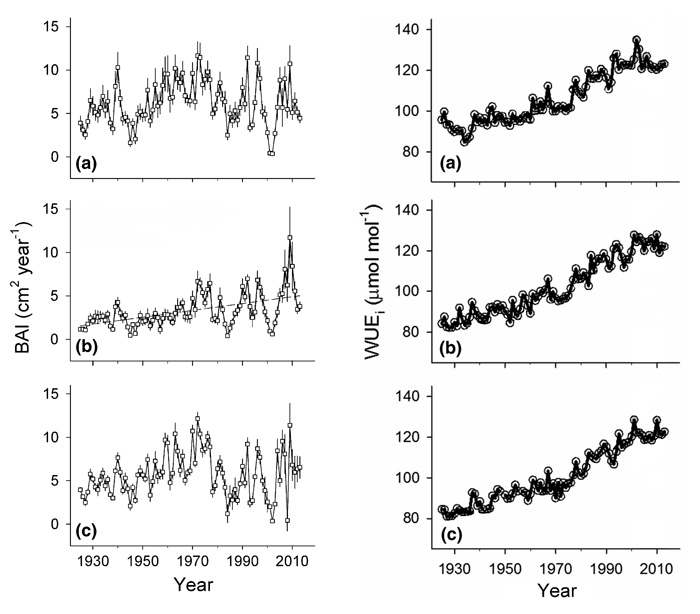| Follow @co2science |
Paper Reviewed
Choury, Z., Shestakova, T.A., Himrane, H., Touchan, R., Kherchouche, D., Camarero, J.J. and Voltas, J. 2017. Quarantining the Sahara desert: growth and water-use efficiency of Aleppo pine in the Algerian Green Barrier. European Journal of Forest Research 136: 139-152.
In response to concerns about the possible impacts of CO2-induced global warming on the biosphere, scientists are turning more and more to empirical analyses to evaluate model-based claims of climate alarmism. And among the many assertions that are made in this regard, is the claim that rising temperatures and increasing droughts will harm forest ecosystems, so much so, in fact, that they contend the positive benefits of atmospheric CO2 enrichment will be overwhelmed by the predicted negative impacts of climate change. But is this happening in the real world?
The latest study to provide insight on the matter comes from Choury et al. (2017), who analyzed long-term trends in the basal area increment (BAI) and intrinsic water-use efficiency (WUEi) of native Aleppo pines (Pinus halepensis Mill.) growing in the Djelfa province of Algeria, near the northern border of the Sahara Desert. There, they cored multiple trees from three locations so as to evaluate such trends over the period 1925-2013, during which time mean annual temperatures rose by 1.5°C and atmospheric CO2 concentrations rose by approximately 30 percent. So did this modern increase in temperature and CO2 bring doom down upon this forested region? Are the Aleppo pines here showing signs of distress?
In a word, hardly!
As illustrated in the figure below, Choury et al. report "the BAI patterns of natural Aleppo pine stands did not show a decreasing trend over the last century, indicating that warming-induced drought stress has not significantly affected secondary growth of pines in the area; instead, BAI trends were stable or even showed a significant increase in the case of the North slope site." Similar good fortunes were noted for the trees' WUEi, with the seven-member research team reporting that "WUEi increased by ca. 39% across sites between 1925 and 2013."
Altogether, the welcomed results of their analysis led Choury et al. to conclude that their study "highlights the substantial plasticity of Aleppo pine to warming-induced drought stress," while adding that "the extent of such plastic responses for Aleppo pines growing at the southernmost limit of the species distribution area is, from a physiological point of view, remarkable." Consequently, it would appear that model-based assertions that the predicted negative impacts of climate change will overpower any positive influence of rising atmospheric CO2 on forests could not be more wrong!

Figure 1. Temporal trends in basal area increments (BAI, left panels) and intrinsic water-use efficiency (WUEi, right panels) from trees growing in the Djelfa forest of Algeria for the period 1925-2013 (Sites: a = Plateau; b = North slope; c = South slope). Adapted from Choury et al. (2017).




